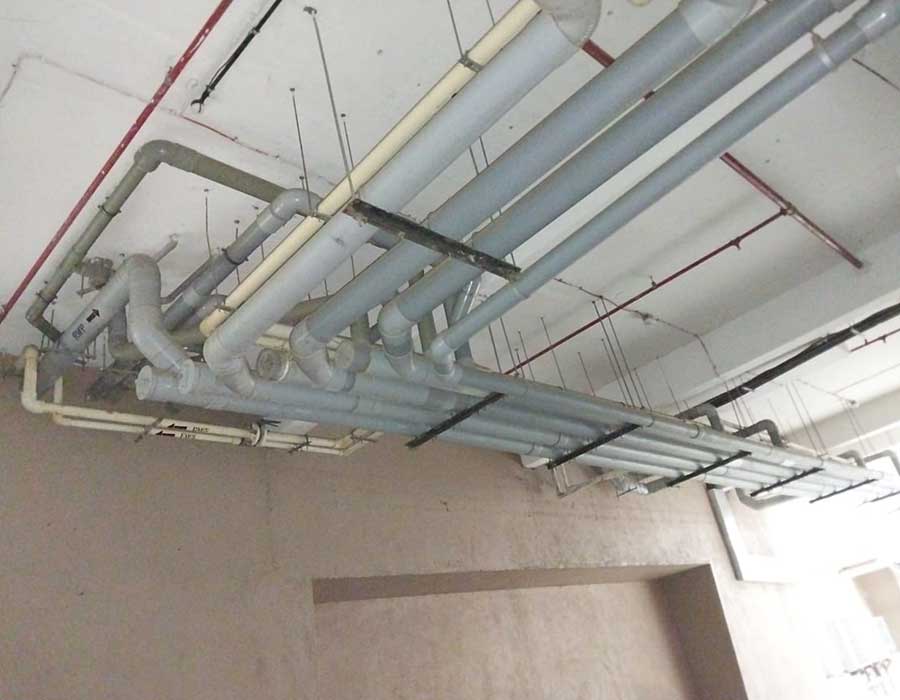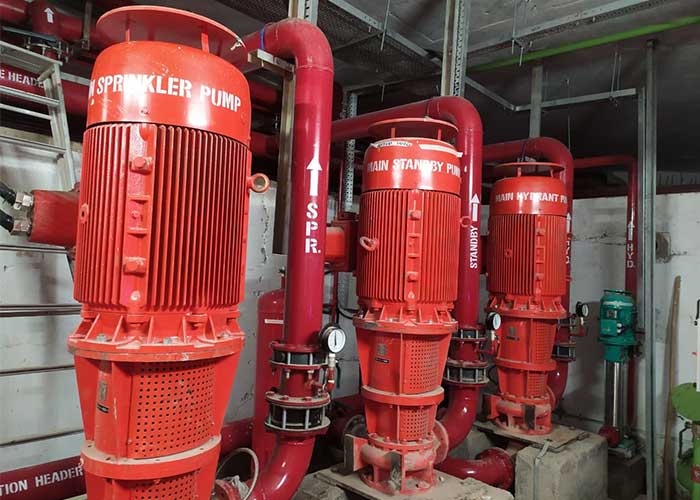

PHE Works
Water Supply Piping



Drainage Piping



Sanitary Fittings and Fixtures



Pumps




Plumbing and Sanitation
The plumbing and sanitary system is an essential part of every house or building. Proper planning and designing of plumbing systems are crucial as it takes care of the hygiene requirements of the occupants.
Sanitary plumbing system includes the pipes, fittings are the appliances used in a house plumbing system, to receive the human excreta and wastes of the house. Sanitary fittings are water closets (WC), Urinals, flushing cistern for water closets.
Internal and External Drainage System / Lines
Interior and exterior drainage systems have the same function to collect water that is near your foundation and direct it away from your house. Water is naturally in the ground, surrounding your home. When it works its way through the soil to your house, it’s collected in the drainage channel. Internal drainage refers to water entering and moving through the soil profile. Sub- surface installed drainage systems refer to pipe systems installed beneath the field to direct excess water from the root zone to a drainage outlet.


Internal and External Water Supply System / Lines
A water supply system is a system for the collection, transmission, treatment, storage and distribution of water from source to consumers. For example homes, commercial establishments, industry, irrigation facilities and public agencies for water related activities. A water pipe is any pipe or tube designed to transport treated drinking water to consumers. The varieties include large diameter main pipes, which supply entire towns, smaller branch lines that supply a street or group of buildings, or small diameter pipes located within individual buildings.
Water supply and Sanitary Fittings Installation
Water supply is the provision of water by public utilities, commercial organizations, community endeavors or by individuals, usually via a system of pumps and pipes. Public water supply systems are crucial to properly functioning societies. These systems are what supply drinking water to populations around. The most common plumbing fixtures are bathtubs, sinks, showers, tubs, toilets and faucets. While a fixture can be fixed into walls or the floor, a fitting is an item that can be hung by a hook, screw or nail.


Pumps - Water supply and Sewage
A pump is a mechanical device that lifts liquids from a lower level or low-pressure area to a higher level or high-pressure area. It is heavy duty equipment with low suction and high discharge pressure. This makes it easier to pump a fluid from a certain depth and push the fluid to the desired height.
Sewage pumps transport sewage and untreated waste water (eg. raw waste water). They are most commonly used in municipal waste water treatment plants but also in buildings and private homes.
Rain Water Harvesting
Rain water harvesting is collection and storage of rain water that runs off from roof tops, parks, roads, open grounds, etc. This water runoff can be either stored or recharged into the ground water.
Hot Water System - Conventional and Solar
Hot water from the boiler passes through the heating coil within the cylinder, transferring its heat to the water inside the cylinder as it passes, but never mixing with the water inside the cylinder. The heat is transferred and the water from the coil comes back around to the boiler to be heated up again. Solar water heating system is a device that helps in heating water by using the energy from the SUN. This energy is totally free. Solar energy (sun rays) is used for heating water. Water is easily heated to a temperature of 60-80o C.


Water Treatment Plant
Public drinking water systems use different water treatment methods to provide safe drinking water for their communities. Public water systems often use a series of water treatment steps that include coagulation, flocculation, sedimentation, filtration, and disinfection.
Sewage Treatment Plants
A water treatment plant is a destination where wastewater (water which is no longer fit for its current purpose) moves to once it leaves homes and commercials places through sewage pipes. The sewage system contains pipes below ground where wastewater flows to the treatment plant for processing.


Water Treatment Plant
Public drinking water systems use different water treatment methods to provide safe drinking water for their communities. Public water systems often use a series of water treatment steps that include coagulation, flocculation, sedimentation, filtration, and disinfection.
Irrigation system
Irrigation is the artificial application of water to the soil through various systems of tubes, pumps, and sprays. Irrigation is usually used in areas where rainfall is irregular or dry times or drought is expected. There are many types of irrigation systems, in which water is supplied to the entire field uniformly.

